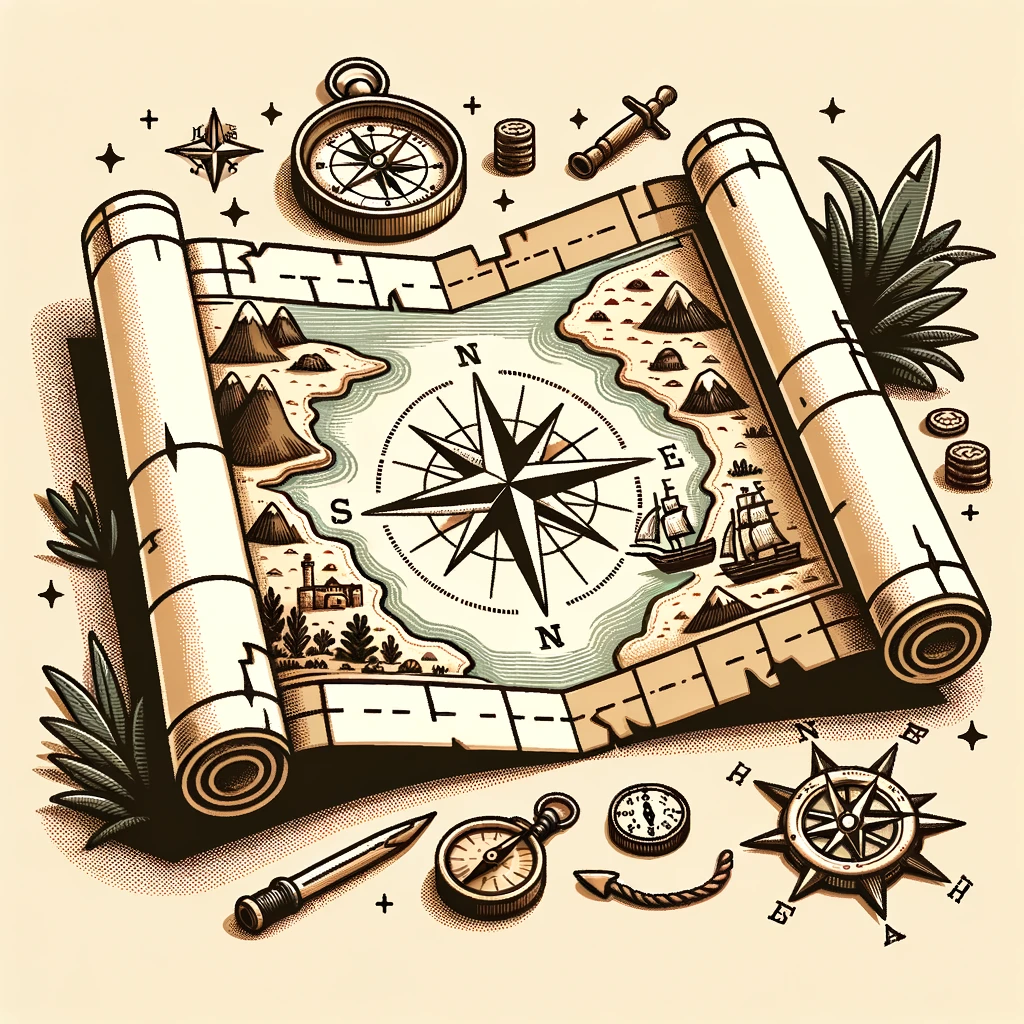The Science Behind Virtual and Augmented Realities
In recent years, both **Virtual Reality (VR)** and **Augmented Reality (AR)** have emerged as groundbreaking technologies that are reshaping how we interact with the digital world. These innovations open up new possibilities in fields ranging from entertainment and education to healthcare and real estate. Understanding the science behind these technologies not only enhances our appreciation of their capabilities but also allows us to anticipate future developments.
What is Virtual Reality?
**Virtual Reality** is a fully immersive experience that replaces the real world with a simulated environment. Users put on VR headsets that block out physical surroundings and immerse them in a 3D, computer-generated world. Key elements involved in creating this immersive experience include:
Visual Immersion: Head-mounted displays (HMDs) provide a stereoscopic view with wide field-of-vision to mimic real-life experiences.
Motion Tracking: Sensors and cameras track the user’s head movements and adjust the visuals accordingly to maintain the illusion of depth and presence.
Interaction: Handheld controllers or gloves allow users to interact with the virtual environment, often providing haptic feedback to simulate touch.
Key Technologies in VR
The implementation of VR involves a synergy of various technologies, each playing a critical role in enhancing realism and usability:
Graphics Processing Units (GPUs): Advanced GPUs are essential for rendering highly detailed 3D environments in real-time.
Sensors and Cameras: These devices capture the user’s full range of movements, from head tilts to hand gestures, integrating them into the VR experience.
Audio Systems: Spatial audio techniques create realistic soundscapes, which contribute significantly to the feeling of presence in a VR setting.
What is Augmented Reality?
**Augmented Reality**, in contrast, enhances the real world by overlaying digital information on top of it. Rather than creating a completely separate environment, AR integrates virtual elements into the user’s existing surroundings, often in real-time. Here are some key aspects of AR technology:
Overlaying digital content: AR uses devices such as smartphones, tablets, or specialized glasses to display digital information, like text, images, or animations, superimposed on the real world.
Multiple Platform Compatibility: AR applications can be used across various devices, making them versatile and accessible.
Contextual Interaction: AR systems are often equipped with functionalities that allow users to interact with and manipulate the digital content in real-time.
Core Technologies in AR
The development and application of AR involve a complex set of technologies that allow digital content to blend seamlessly with the real world:
Technology
Function
Computer Vision
Analyzes real-world images and recognizes environments to accurately overlay digital content.
Simultaneous Localization and Mapping (SLAM)
Builds maps of unknown environments and keeps track of the user’s location within it.
Depth Tracking
Calculates the distance and position of objects to ensure accurate placement of digital overlays.
The Convergence: Mixed Reality
Both VR and AR offer distinct experiences, but they have begun to converge into what is known as **Mixed Reality (MR)**. This new frontier blends elements of VR and AR, creating environments where physical and digital objects can interact seamlessly. MR offers exciting opportunities…
The Science Behind Virtual and Augmented Reality
As we delve deeper into the **realms of virtual and augmented reality**, it’s essential to understand the underlying technology that empowers these immersive experiences. At the heart of these innovations is the integration of **computer vision, graphical rendering,** and **sensor technology**.
Underlying Technologies
Computer Vision: This involves the acquisition and processing of real-world imagery to create a digital space that responds to real-life movements and changes.
Graphical Rendering: Essential for creating realistic environments, graphical rendering uses powerful algorithms to simulate lighting, textures, and other visual effects.
Sensor Technology: From gyroscopes to accelerometers, sensors track user movements to ensure a seamless interaction between the user and the digital world.
Applications Across Industries
**Virtual and augmented reality** (VAR) have penetrated various sectors, transforming traditional practices into cutting-edge approaches.
Healthcare
In the medical realm, VR is used for **simulated surgeries** and patient education, while AR assists in real-time information overlay during surgeries.
Education
VR creates an immersive learning environment, allowing **students to explore** historical settings or conduct experiments within a controlled virtual environment.
Entertainment and Gaming
Entertainment has been revolutionized, with VR-based gaming offering a fully-immersive experience that transports players into the game world itself.
Retail
AR enables customers to visualize products in their own home setting before purchase, drastically enhancing the shopping experience.
Challenges and Future Outlook
Despite the impressive strides, there are challenges in **VR and AR development** that need to be addressed:
Hardware Limitations: The need for more compact, powerful devices continues to challenge developers.
Content Development: Creating engaging and realistic content is equally resource-intensive and requires specialized skills.
User Experience: Ensuring user comfort and minimizing issues like **motion sickness** are crucial for widespread adoption.
Projected Growth of VR and AR (2023-2030)
**The future of VR and AR** looks promising as advancements in technology make these immersive experiences more accessible and integrated into daily life.
Additional Resources for Further Exploration
The Impact of VR and AR on Society
Emerging Technologies in VR and AR
The Future of These Technologies
The Applications and Future Potential of VR and AR
**Virtual Reality (VR)** and **Augmented Reality (AR)** are transforming industries in remarkable ways. Their applicability across various fields promises significant advancements in how we interact with both digital and physical environments. From entertainment to healthcare, these technologies are revolutionizing traditional practices and setting new standards.
Entertainment and Gaming
The entertainment industry is arguably the most celebrated arena for VR and AR. **Gaming** platforms have embraced these technologies to create immersive experiences that captivate and engage users in unprecedented ways.
**Enhanced Interactivity**: VR gaming allows players to step inside the game environment, offering a first-person perspective that increases engagement.
**Augmented Reality in Mobile Apps**: Games like Pokémon Go have demonstrated the potential of integrating the real world with digital elements, enhancing user interaction.
Healthcare and Medical Training
In the realm of healthcare, the application of VR and AR is lifesaving. These technologies assist in procedures, training, and patient care.
Simulation and Practice: VR provides a safe environment for medical professionals to practice surgical procedures without risks associated with direct patient interaction.
Education and Training
As education systems seek innovative methods to engage learners, VR and AR offer dynamic solutions.
Application
Impact
VR Classrooms
Creates immersive environments for students to explore complex subjects like history, science, and art.
AR Learning Apps
Overlays educational content in the real world, enhancing interactive learning experiences.
Enterprise and Workplace Training
The corporate sector benefits from the **practical training** applications provided by VR and AR. Companies can simulate real-world scenarios to train employees efficiently and safely.
**Safety and Compliance**: VR aids in teaching safety procedures, providing real-world practice without the associated risks.
**Remote Collaboration**: AR can overlay instructions and feedback on physical objects, facilitating teamwork regardless of location.
Challenges and Considerations in VR and AR Development
Despite their groundbreaking potential, **VR and AR technologies** face several challenges that could impede their widespread adoption. Understanding these challenges is critical for stakeholders aiming for long-term success.
Technical Limitations
Current technical barriers include hardware costs, device limitation, and the refinement of user interface design to minimize motion sickness and discomfort.
**Cost and Accessibility**: High-end devices may not be accessible to all users due to their expensive nature.
**Latency and Visual Quality**: Ensuring seamless visual experiences without lags or poor graphic quality remains a priority.
Ethical and Privacy Concerns
The data collection inherent in AR applications, particularly those that interact with real-world environments, poses potential **privacy issues**.
**Data Security**: Companies must ensure user data collected through AR apps is safeguarded against breaches.
**Ethical Use**: Developers need to comply with ethical standards to ensure the technology does not infringe on personal privacy.
Conclusion
**Virtual and Augmented Reality** are undeniably changing the landscape of modern technology. Their application in diverse fields from **entertainment to healthcare** is only a glimpse into their potential. While there are challenges to address, the future holds promise as technology advances and adapts overcome these hurdles.
Summary and Action Items
**Explore new applications** of VR and AR across various industries to fully utilize their potential.
**Address technical hurdles** such as reducing costs and improving device capabilities to increase accessibility.
**Prioritize data security and ethical considerations** to maintain user trust and compliance with privacy standards.
**Stay informed** about advancements in technology to adapt and integrate these solutions into existing systems effectively.


 Afrikaans
Afrikaans Shqip
Shqip አማርኛ
አማርኛ العربية
العربية Հայերեն
Հայերեն Azərbaycan dili
Azərbaycan dili Euskara
Euskara Беларуская мова
Беларуская мова বাংলা
বাংলা Bosanski
Bosanski Български
Български Català
Català Cebuano
Cebuano Chichewa
Chichewa 简体中文
简体中文 繁體中文
繁體中文 Corsu
Corsu Hrvatski
Hrvatski Čeština
Čeština Dansk
Dansk Nederlands
Nederlands English
English Esperanto
Esperanto Eesti
Eesti Filipino
Filipino Suomi
Suomi Français
Français Frysk
Frysk Galego
Galego ქართული
ქართული Deutsch
Deutsch Ελληνικά
Ελληνικά ગુજરાતી
ગુજરાતી Kreyol ayisyen
Kreyol ayisyen Harshen Hausa
Harshen Hausa Ōlelo Hawaiʻi
Ōlelo Hawaiʻi עִבְרִית
עִבְרִית हिन्दी
हिन्दी Hmong
Hmong Magyar
Magyar Íslenska
Íslenska Igbo
Igbo Bahasa Indonesia
Bahasa Indonesia Gaeilge
Gaeilge Italiano
Italiano 日本語
日本語 Basa Jawa
Basa Jawa ಕನ್ನಡ
ಕನ್ನಡ Қазақ тілі
Қазақ тілі ភាសាខ្មែរ
ភាសាខ្មែរ 한국어
한국어 كوردی
كوردی Кыргызча
Кыргызча ພາສາລາວ
ພາສາລາວ Latin
Latin Latviešu valoda
Latviešu valoda Lietuvių kalba
Lietuvių kalba Lëtzebuergesch
Lëtzebuergesch Македонски јазик
Македонски јазик Malagasy
Malagasy Bahasa Melayu
Bahasa Melayu മലയാളം
മലയാളം Maltese
Maltese Te Reo Māori
Te Reo Māori मराठी
मराठी Монгол
Монгол ဗမာစာ
ဗမာစာ नेपाली
नेपाली Norsk bokmål
Norsk bokmål پښتو
پښتو فارسی
فارسی Polski
Polski Português
Português ਪੰਜਾਬੀ
ਪੰਜਾਬੀ Română
Română Русский
Русский Samoan
Samoan Gàidhlig
Gàidhlig Српски језик
Српски језик Sesotho
Sesotho Shona
Shona سنڌي
سنڌي සිංහල
සිංහල Slovenčina
Slovenčina Slovenščina
Slovenščina Afsoomaali
Afsoomaali Español
Español Basa Sunda
Basa Sunda Kiswahili
Kiswahili Svenska
Svenska Тоҷикӣ
Тоҷикӣ தமிழ்
தமிழ் తెలుగు
తెలుగు ไทย
ไทย Türkçe
Türkçe Українська
Українська اردو
اردو O‘zbekcha
O‘zbekcha Tiếng Việt
Tiếng Việt Cymraeg
Cymraeg isiXhosa
isiXhosa יידיש
יידיש Yorùbá
Yorùbá Zulu
Zulu

